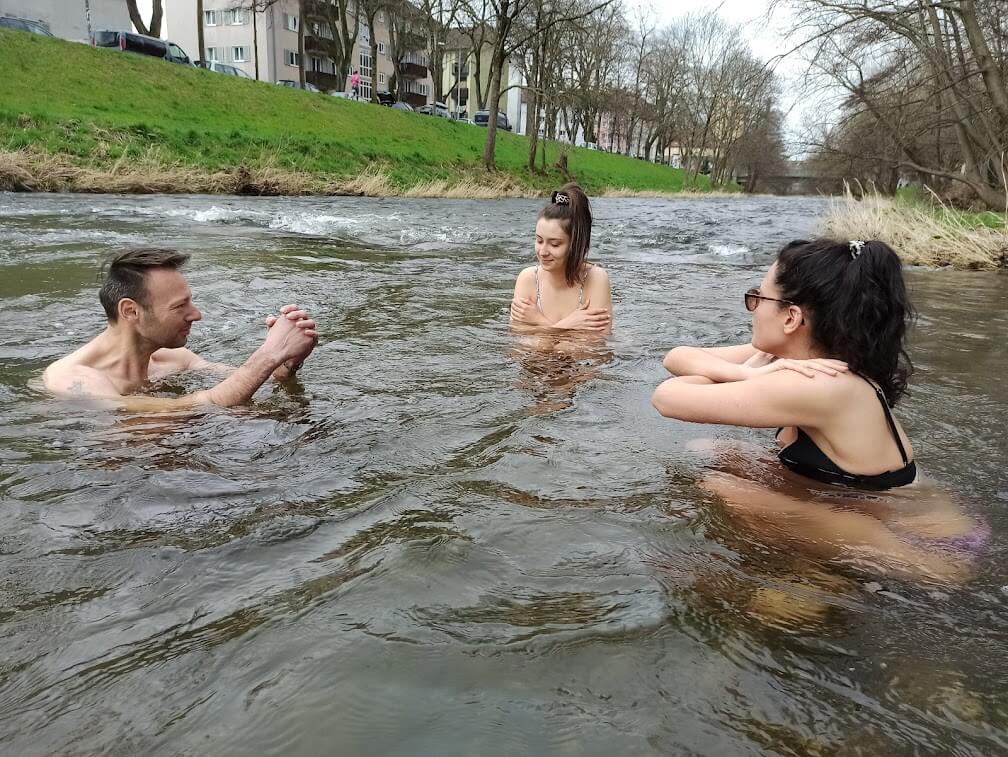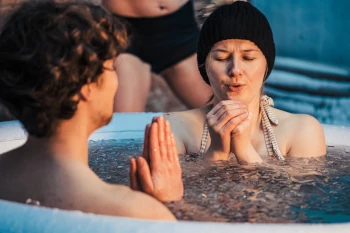Many are wondering what, exactly in the body in Cold Plunge . In this article we deal with the most important physiological, i.e. physical aspects. When you start with Cold Plunge , you should be able to feel and understand these effects directly on your own body.
Table of contents
3 phases effects of Cold Plunge on the body
With your body, your body primarily passes three reactions as a direct answer to cold Cold Plunge . In the following we discuss these 3 reactions more precisely:
- Peripheral vasoconstriction
- Chemical thermogenesis
- Mechanical thermogenesis
1. Peripheral vasoconstriction
This term sounds complicated, but everyone who has frozen properly should know him. The peripheral parts of the body, i.e. the parts of the body that are most distant from your heart and can therefore be kept warm, are "sacrificed" by the body. This is a very natural and sensible defense mechanism, because it increases your chances of survival immensely. Instead of saving the entire body, only the most important part is saved with the most important organs. And that doesn't include your toes, feet, fingers and hands.
You will definitely know this from your own experience that you have cold hands or feet in winter. This is the peripheral vasoconstriction in a small scale. For example, if you are on the road slightly dressed in winter, hands and feet usually become cold and start to sting uncomfortably.
The peripheral vasoconstriction is therefore a sensible defense reaction of your body on the cold in which the blood vessels in the peripheral body regions, ie in the arms, legs, hands and feet are narrowed and the blood flow is reduced in these areas. This means that less warm blood gets to the surface and therefore less heat is lost. In the ice pool you notice this particularly well, because your hands and feet start to hurt quite quickly. Some cold plunger also complain about numbness in these parts of the body when they stay in the ice pool for too long. The reduced blood flow to the skin leads to a pale or bluish discoloration of the affected body parts, since less blood and thus less oxygen and nutrients get there. This is a problem if it lasts longer. With a short ice cream bath over a few minutes, however, this usually doesn't matter.
You will see many cold plunger , take the poses as well as in the picture below to better protect your hands. Of course, this is not possible with the feet, unless you wear neoprexes or shoes.

2. Chemical thermogenesis
The first step is that the body decides not to keep all parts of the body, but only the vital organs in the middle of the body. But that alone is not enough, because the body also has to try to boost heat generation in order to warm up from the inside. This happens, among other things, with biochemical processes such as activating the sympathetic. The cold activates the sympathetic nervous system, which promotes the release of neurotransmitters such as noradrenaline. These neurotransmitters act on various target organs and tissues to increase energy production and metabolism, which leads to increased heat generation.
The body has two types of adipose tissue: the white fat tissue, which mainly serves as energy storage, and the brown adipose tissue . Brown fat is particularly important for thermogenesis because it contains a large number of mitochondria, which can produce heat themselves like small power plants. When the body is exposed to extreme cold, the brown adipose tissue is activated and begins to burn fat to create heat. Unfortunately, the brown fat is extremely low for many adults. As a child, this has been increased because children cannot heat themselves by trembling due to the lack of muscle mass. The mitochondria are then used to boost body heat.
The good news is that the brown fat or beige fat (an intermediate form) can be produced again if it is needed. However, since we no longer expose ourselves to sufficient cold stimuli in our modern world, the brown fat is no longer produced or is not sufficiently available. But it forms if you regularly go Cold Plunge . Certain proteins, such as the Uncoupling protein 1 (UCP1), which occurs in the mitochondria of brown fat tissue, also support the process of thermogenesis. UCP1 is involved in the decoupling of oxidative phosphorylation, which creates the energy in the form of heat instead of ATP (adenosintriphosphate).
3. Mechanical thermogenesis
What sounds high means in good German means: trembling. Each of us knows this - when you freeze, you start trembling. The cold stimulates the nerve cells in the skin and sends the signal to the brain that it is cold. The hypothalamus in the brain then initiates the activation of the muscles. In particular, the large muscle groups such as the fuselage and the limbs are important and begin to tremble rhythmically. You cannot avoid tremors or control the process, because this is automatically controlled by your brain.
The trembling of the muscles generates heating heat as if you were rubbing your palms against each other. The warmth is a by -product of friction, so to speak, so it is disproportionately spent on a disproportionate amount of energy to get you warm. This has the pleasant side effect that you can also burn calories and lose weight Cold Plunge .
The energy for trembling comes from the carbohydrate storage of your body, which are available at short notice, as well as from the fats (white fat). The increased metabolism also contributes to the heat generation, ie the engine is inserted and starts trembling, with which it consumes energy, but also because the engine is running at full speed, it is already warm.
Conclusion
You see it, your body is a real miracle of nature. And accordingly carefully and well you have to treat it. He can usually do more than you think. And to challenge him every now and then, for example through a well -proportioned Cold Plunge session, can do it very well.







